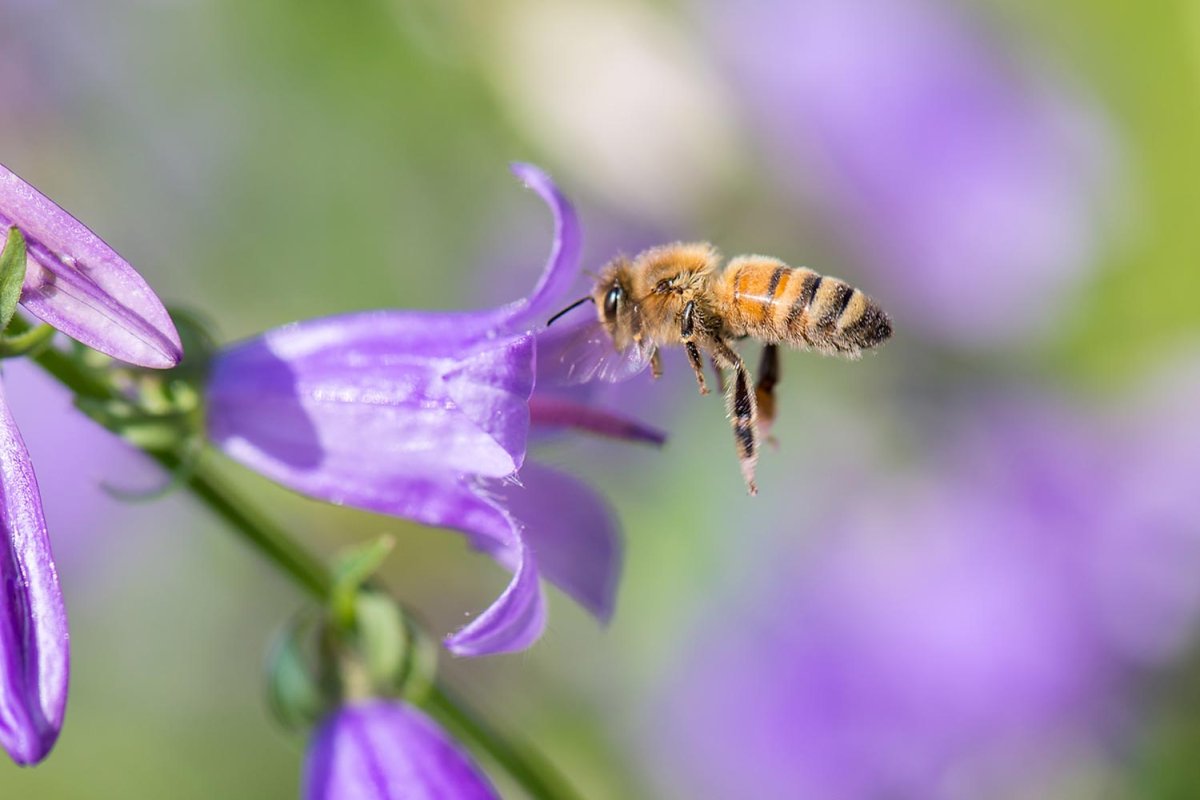We all have a jar of honey in our pantries. We stir it into hot cups of tea, spread it on toast or take a spoonful of it when we’re feeling ill. But have you thought about spreading it on your face or using it as a hair treatment?

While honey has been a kitchen staple for centuries (the first documented human use of honey dates back 8,000 years) there is an ever-widening array of uses for it—from innovative food and drinks to skincare products to household uses.
“What I have seen over the last several years is an increasing interest by producers to explore different types of products,” says Connie Phillips, executive director of the Alberta Beekeepers Commission.
Alberta is the largest producer of honey in the country. In 2018, the province produced 37 million pounds of it, accounting for 40 per cent of the total honey production in the country. It’s an industry that grosses $64 million.
So what are some of the more unusual uses for honey?
Food products
Phillips says in the past several years she has seen some unique honey-based foods come onto the market in Alberta.
For example, in Edmonton a cookie company called River City Cookies began working with Alberta beekeepers to create a line of honey-based candies.
Additionally, “they have been making marshmallows using honey rather than corn syrup. They made a batch of orange-flavoured marshmallows which was a lot of fun.”
And its use in alcohol, including mead (honey wine), craft beer and spirits is becoming increasingly popular.
“Mead has seen a big resurgence in the last ten years,” says Richard Ozero, a beekeeper based in Edmonton who has 3,000 hives across 120 sites. He knows of an entrepreneur who wanted to work with honey but he didn’t want to be a beekeeper so he began experimenting with various meads, including raspberry, apple and ginger mead. His product is so popular that now he can’t keep up with the demand, Ozero says.

Get daily National news
Skincare
Honey also has a long history of healing and antibacterial properties. Research shows that raw honey “offers antibacterial activity, maintains a moist wound condition, and its high viscosity helps to provide a protective barrier to prevent infection.”
Unusual uses
Experts suggest dotting it onto pimples and leaving for half an hour, or using it on the face as a mask.
Other honey products
Of course, bees make more than just honey. Beeswax and pollen are two main by-products.
Ozero says he sells fresh frozen pollen and it’s an extremely popular product. Some eat it plain while others sprinkle it on yogurts or other desserts.
“It has a lovely lemony crunch,” he says.
While beeswax is already well-known for its use as an all-natural ingredient in lip softening products and lotions, many swear by it as a great furniture polish or moustache wax, says Ozero.
He works with a company that combines natural beeswax with a variety of patterned cloths to create a very popular farmer’s market product in Alberta. “They make a really great reusable food wrap,” he says.
As Sue Monk Kidd wrote in The Secret Life of Bees, honey really is a multi-use product.
“We lived for honey. We swallowed a spoonful in the morning to wake us up and one at night to put us to sleep. We took it with every meal to calm the mind, give us stamina, and prevent fatal disease. We swabbed ourselves in it to disinfect cuts or heal chapped lips. It went in our baths, our skin cream, our raspberry tea and biscuits. Nothing was safe from honey…honey was the ambrosia of the gods and the shampoo of the goddesses.”
The uses for honey are seemingly only limited by the imagination. The Alberta Beekeepers Commission “The Hive Next Door” initiative aims to highlight the unique properties and benefits of honey, introduce you to local beekeepers and honey producers who sustainably harvest it, and demonstrate some new and exciting ways to take advantage of all the flavour and health possibilities of pure, local, Alberta honey. For many more ideas and information, including recipes, visit the Alberta Beekeepers Commission.



